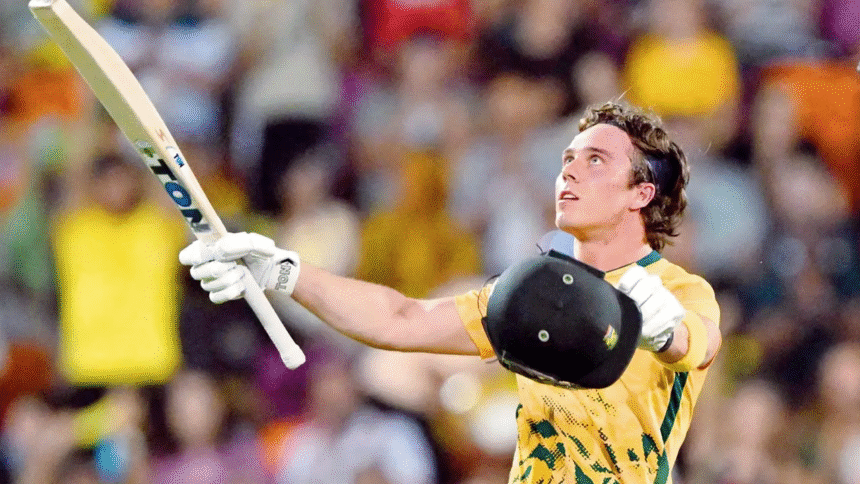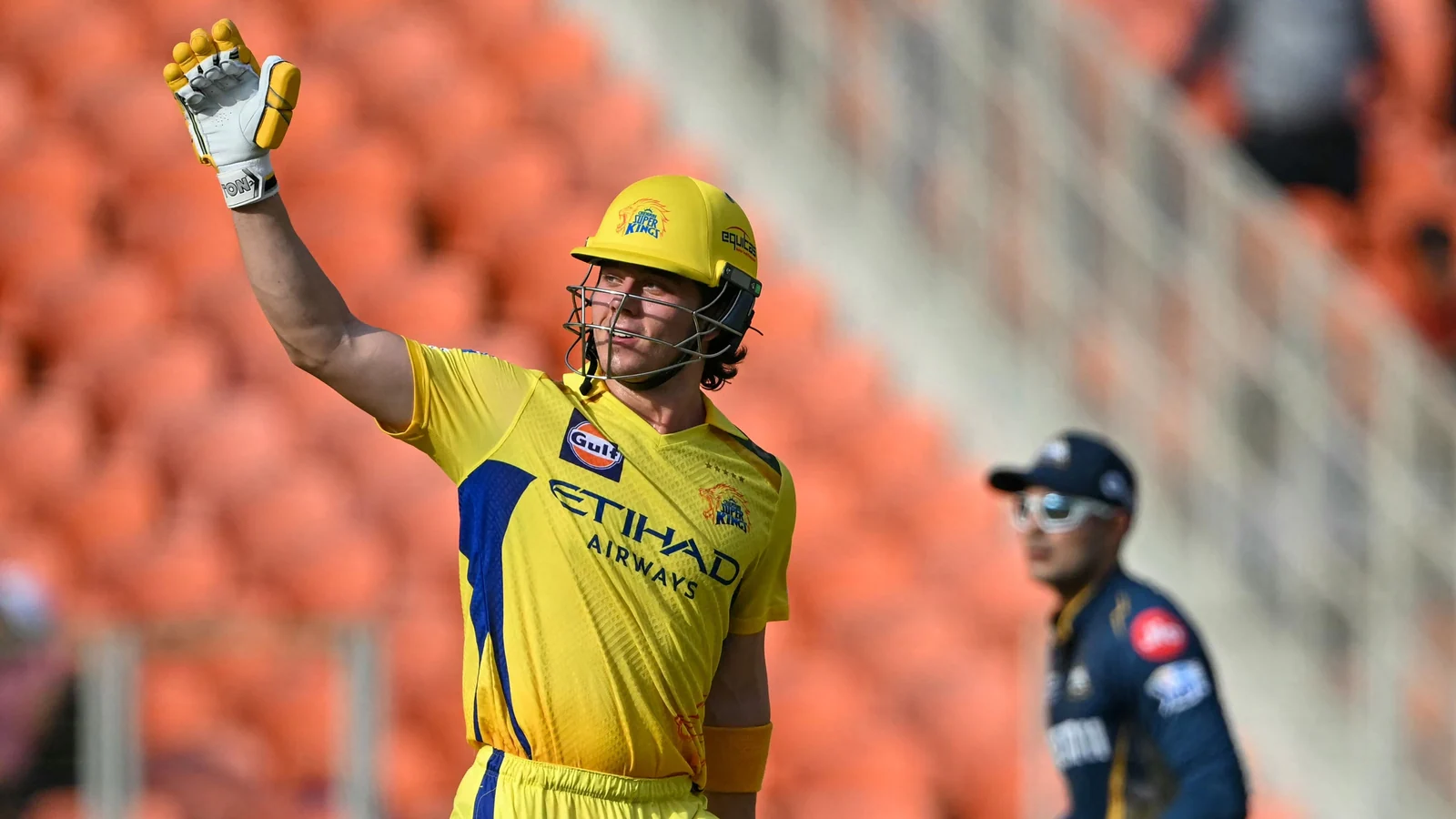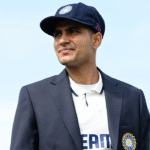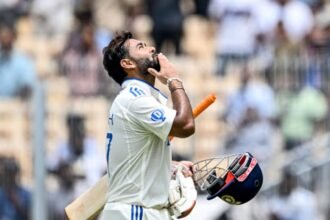When you step into a cricket net session these days, where young batters are perfecting their cover drives and rehearsing those massive slog sweeps, one name echoes often: Dewald Brevis. For a teenager to generate such hype is rare, but to sustain it is even rarer. Dewald Brevis has done both. He first grabbed global attention with a spectacular Under-19 World Cup campaign, then kept the spotlight burning through franchise cricket leagues, and now he’s slowly scripting his international story with South Africa.
Dewald Brevis’s career so far is the blueprint of modern batting: fearless shot range, natural flair for white-ball cricket, cool composure off the field, and a constant tussle between raw hype and the grind of hard work. Let’s walk through his journey, from a schoolboy prodigy to South Africa’s rising cricket star.
From Schoolboy Prodigy to Under-19 Phenomenon
Every international player has a moment when they announce themselves, and for Dewald Brevis, it was the Under-19 World Cup. He didn’t just score runs—he dominated matches. His ability to control the tempo of an innings was remarkable.
At times, he’d build a foundation with classy orthodox shots: crisp punches through cover or delicate flicks behind square. And then, in an instant, he’d flip the switch into full attack mode, smashing bowlers into the stands.
Two things stood out in that tournament:
- His batting stance, which reminded everyone of AB de Villiers.
- The sheer confidence of a teenager who played as if the boundary rope was a few feet closer for him than for anyone else.
This performance earned him the nickname “Baby AB.” At first, it was playful, but soon it became a serious comparison. Dewald Brevis has embraced the inspiration without letting it define him. He takes lessons from AB’s genius but insists on carving his own path.
Franchise Leap: The Fast Track to Stardom
The Under-19 World Cup lit the spark, but franchise cricket turned it into a flame. Dewald Brevis’s signing in the Indian Premier League (IPL) was the turning point. Overnight, he was rubbing shoulders with world-class cricketers, absorbing insights from seasoned coaches, and facing the intense pressure of playing in front of packed stadiums.
Franchise cricket is unforgiving. Your strengths get magnified, but so do your weaknesses. Dewald Brevis adapted quickly. His explosive cameos made headlines, but what impressed the analysts were the quieter innings—those 20s and 30s built with calculated risk, strike rotation, and patience.
He also displayed his other skills:
- Sharp fielding with a natural athletic edge.
- Handy leg-spin bowling, offering his team a part-time option.
In the SA20 and other T20 leagues, Dewald Brevis was used in multiple roles. Sometimes he walked in at No. 3 to attack spinners. At other times, he was the finisher who could turn a par score of 160 into a daunting 190 with a few brutal hits. This adaptability is exactly what modern teams need.
First Steps in International Cricket
The international stage is a different beast. Bowlers come armed with detailed analysis of your strengths and weaknesses. They know where you like to score and where you struggle.
When Dewald Brevis first wore the South Africa jersey, he experienced both sides of international cricket:
- The Sparks: quick hands, confident stroke play, and audacious shots over extra cover.
- The Lessons: world-class seamers targeting his body with short deliveries, and clever spinners setting traps with field placements.
But what stands out about Dewald Brevis is his mindset. He doesn’t see failures as setbacks; he treats them as lessons. Conversations with senior players, post-match reflections, and constant learning make him look more like a process-driven professional than just a highlight-seeking youngster.
Dewald Brevis’s Technique: The Modern White-Ball Blueprint
What makes Dewald Brevis such a special batter? His efficiency. His batting is built around three pillars:
- Base and Bat Speed
He stays slightly open-chested, giving his hands freedom. His back-lift is compact, creating repeatable bat speed. Even if he’s a fraction late, the ball still travels. - Range Without Overreaching
Many young players step too far across to manufacture shots. Dewald Brevis avoids that. He creates room with a small trigger and plays under his eyes. His inside-out loft over extra cover and pick-up pull over mid-wicket are his signature shots. - Match-Up Awareness
Against pace, he thrives on the rise, punishing deliveries square of the wicket. Against spin, he uses the full toolkit—reverse sweeps, slog sweeps, and quick footwork down the track. He doesn’t just play shots randomly; he sequences them to manipulate fielders and bowlers.
Add his leg-spin bowling to the mix. While not frontline quality yet, even two economical overs in T20 cricket can swing momentum.
“Baby AB”: Blessing or Burden?
The AB de Villiers comparison is both exciting and dangerous. Their stances and 360-degree hitting styles are similar, but Dewald Brevis has his own strengths.
While AB thrived on outrageous improvisation, Dewald Brevis’s superpower lies in consistency. He can hit the same slot ball after ball with brutal efficiency. That’s a different kind of weapon, and just as valuable in today’s T20 cricket.
Psychologically, the comparison could weigh heavily on him. Yet, Dewald Brevis handles it well. He plays with joy, celebrates teammates’ success, fields with passion, and constantly talks about improving himself rather than living up to someone else’s name.
Where Dewald Brevis Fits in South Africa’s White-Ball Plans
South Africa has often had world-class top-order batters, but they’ve lacked a flexible glue player who can adapt between positions. Dewald Brevis could be that missing link.
- Powerplay Aggressor (Opener/No. 3): Can attack pace in the first six overs and give his team a flying start.
- Middle-Overs Manipulator (No. 4): Keeps spin bowlers from choking the innings with sweeps and strike rotation.
- Floater/Finisher (No. 5): Provides stability if early wickets fall, or explosive boundaries if the platform is set.
His versatility is exactly what South Africa cricket needs to compete with the best.
Areas for Growth: The Next Level Demands
Even the brightest stars have to polish their game. For Dewald Brevis, the growth areas are clear:
- Handling Hard Length Bowling: International seamers bowl relentlessly at the awkward chest-high length. He needs to add weapons like the upper-cut or a dead-bat drop to third man.
- Spin Management on Slow Pitches: On tricky surfaces, power-hitting alone won’t work. Developing a reliable sweep for singles and controlled drives for twos will be key.
- Bowling Development: A stronger wrong’un and better variations will make his leg-spin bowling more threatening.
- Elite Fielding: He’s already athletic, but saving 8–10 runs a game consistently will turn him into a guaranteed selection.
The Importance of Mentors and Dressing Room Culture
Dewald Brevis has been fortunate to share dressing rooms with legends in franchise cricket. These experiences accelerate his development. Learning routines, visualizing game scenarios, and using data-driven insights separate professionals from one-season wonders.
One encouraging trait is his constant self-checks between deliveries—adjusting grips, rehearsing shots, and fine-tuning instantly. These small habits often define long international careers.
The Pressure of Expectations
Every young star faces the danger of fans and media expecting instant greatness. Dewald Brevis seems grounded enough to understand that success takes time. White-ball greats often need two or three years at international level to truly settle.
Numbers may fluctuate early in his career, but what matters most is his impact. Does he change the game’s momentum? Can he break a bowler’s rhythm in one over? Dewald Brevis has already shown glimpses of that match-winning ability.
What the Future Could Look Like
Looking ahead, realistic benchmarks for Dewald Brevis in the next few years are:
- T20I Role: Average in the 30s with a strike rate above 145, plus occasional overs of leg-spin.
- ODI Role: A middle-order stabilizer who keeps the innings ticking and accelerates late. At least one century a year and consistent 70+ scores.
- Global Events: One big knockout-stage innings could turn him into a cult hero for South African fans.
- Franchise-International Synergy: Transfer his franchise cricket lessons seamlessly into South Africa’s system.
Read More: ICC Women’s Cricket World Cup 2025: A Historic Homecoming for the Game’s Brightest Stars
Conclusion
The “Baby AB” tag will follow him for a while, and that’s okay. Cricket thrives on comparisons and lineage. But Dewald Brevis is not here to be a copy. He’s here to be himself.
What makes Dewald Brevis special isn’t just the shots but the mindset—playing with joy, learning from every innings, and staying focused on progress rather than hype.
He may be young, but he feels less like a fleeting comet and more like a steady North Star for South Africa’s white-ball cricket. Bright, reliable, and guiding his team toward big victories.








